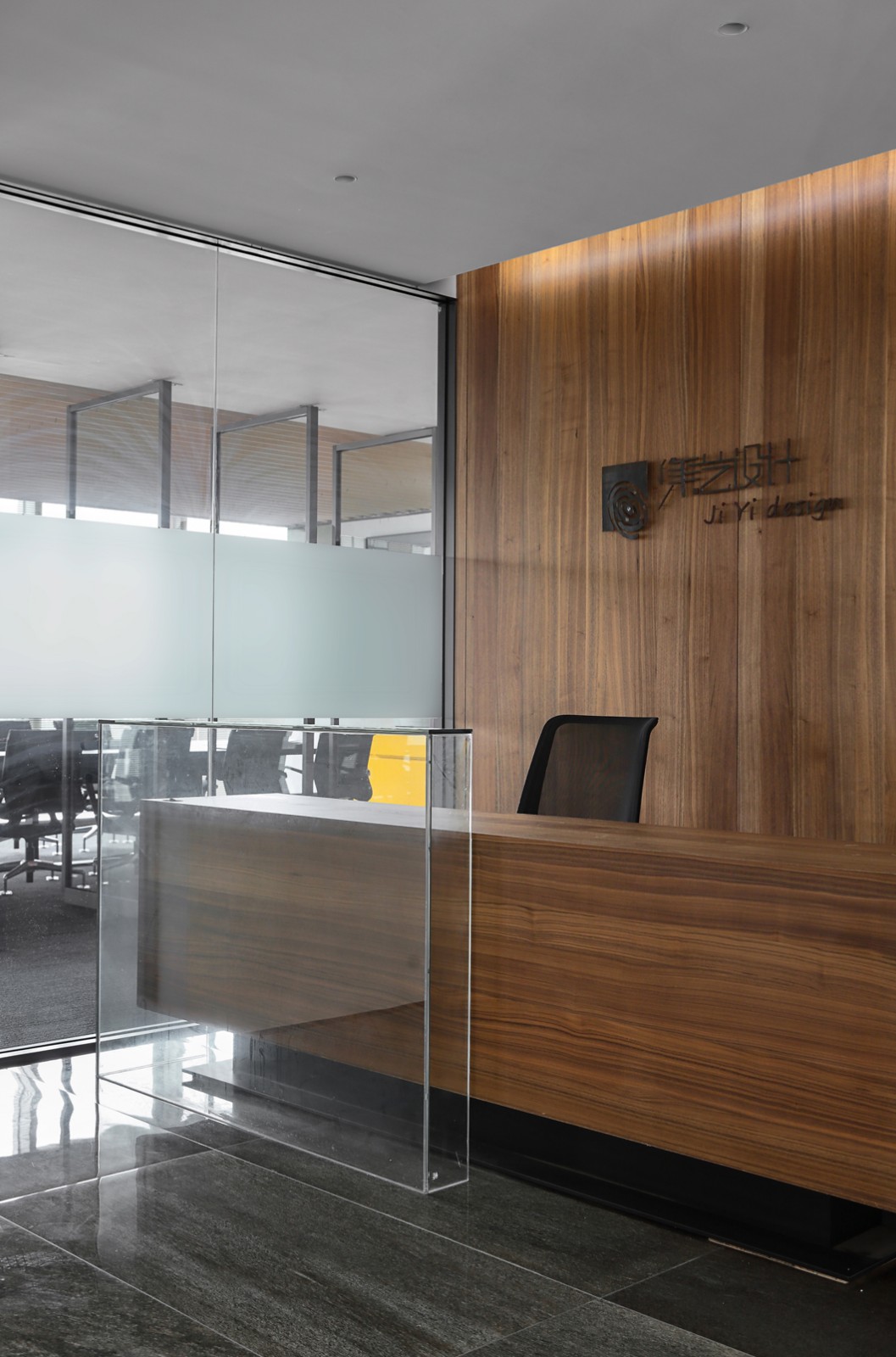Time Stacking House JOHO Architecture
2014-09-16 01:00
© Sun Namgoong
(孙南光)


架构师提供的文本描述。时间的空间再现
Text description provided by the architects. The Spatial Reproduction of Time
空间是由时间投射出来的,而时间则是通过构造来呈现的。时间在空间中留下痕迹,但真正的空间随着时间的流动而变化。如果时间是我们意识中真正存在的东西,那么我们肯定可以把它复制成一个实质性的数字。建筑是时间意象的作品,我们感觉到它是一种不确定的存在。因此,建筑作为一个具有历史意义的过程,体现了存在的历时性和共时性价值。
Space is projected by time, and time presents itself by constructing. Time leaves a trace with space, but the real space changes by the flow of time. If time is what really exists inside our consciousness, it is certain that we can reproduce it as a substantial figure. Architecture is the work of imagery of time we sense as an uncertain being. Therefore, architecture is historical as a meaningful process to present the diachronic and synchronic value of the being.
© Sun Namgoong
(孙南光)


时间越积越多,书越堆越多
As Time is Piled up, As Books are Piled Up
“我至少有2000本书。”当我问我设计的时候,业主们给我讲了一个很有趣的故事。业主夫妇的嗜好与许多书籍是这个概念的要点,也是一个吸引人的条件。关于这些书的故事让我对设计中令人兴奋的空间性产生了想象。就像书的主题一样,现有的建筑也有一个有趣的空间结构。
“I have at least 2,000 books.” The building owners told me quite an interesting story while asking me for design. The owner couple’s hobby with many books was the main point of the concept as well as an attractive condition. The story about the books led me into the imagination about the exciting spatiality on the design. Just like the motif about the books, the existing building had an interesting spatial structure, too.
© Sun Namgoong
(孙南光)


这是一座小于40平房的独立住宅,但一楼的厨房和客厅都是跳地板式的,厨房是连接一楼和二楼起居室的一座桥梁。像这样,房子被分成两部分:第一代的一楼,祖母的,第二代的二楼,主人和他们的孩子。三代人居住在一所房子里是非常有效的空间结构。厨房把两个地方和它的跳板地板连接起来。当主人的图书馆里装满了2000本书时,时间就像这里的旧书一样堆积了好几代人。
It was a detached house smaller than 40 pyeong, but the kitchen and living room on the first floor were skip-floor style, and the kitchen was working as a bridge connecting the living rooms on the first and second floor. Like this, the house was divided into two parts: the first floor for the first generation, the grandmother’s, and the second floor for the second generation, the owners and their children. It was very efficient spatial structure for the three generations to live in a one house. The kitchen connects the both places with its skip floor style. As the owners’ library filled with 2,000 books, time is piled up over the generations like the old books here.
© Sun Namgoong
(孙南光)


新旧砖的和谐与对比
The Harmony and Contrast of the Old and New Bricks
在现有的房子中使用的砖块是那些在70~80年代流行的,但现在已经生产了。作为这座房子历史的象征,砖块的图案和质地上留下了时代的痕迹。这个项目的目标是使用2014年生产的新砖块,在30年前的延伸部分上,同时展示过去和现在。换句话说,它应该用与旧砖块颜色相似的现代砖来表现过去和现在之间的时间交流。通过这一过程,我们可以通过建筑的纹理来解读建筑的时间性,并通过现代空间结构传达时间的情感。
The bricks used in the existing house were those that were popular in 70~80s and but produced anymore these days. The trace of the age remains elegantly on the patterns and texture of the brick as the symbol of the history of this house. It was the goal of this project to use new bricks produced in 2014 on the extended parts of the trace from 30 years ago to present the past and the present at the same time as they are. In other word, it was supposed to present the temporal communication between the past and the present by using the modern bricks that have similar colors with the old bricks on the extended part covering the old ones. With this process, we can read the temporality of the building by its texture and communicate the emotion of time through the modern spatial structure.
Courtesy of JOHO Architecture
由Joho建筑公司提供


作为光明与空气之路的延伸
Extension as the Path for Light and Air
新砖块延伸件上的质量是光和空气流动的一种安装装置,而不仅仅是空间的简单延伸。它的优点是在现有砖块的上部加装了新的砖砌部分,它可以利用借来的光照明从屋顶上部获得一定强度的照明,以及使空气流通到被加热的上部的路径。
The mass on the extended part with the new bricks is a kind of installing device where light and air flows, not just the simple extension of space. It has advantage of the new brickwork part which put on the upper part of the existing brick mass, it can take the regular intensity of illumination from the upper roof side with lighting by the borrowed light as well as the path of air making the air circulate to the upper part being heated.
Perspective Technical Section
透视技术科


有了电动车窗,它也可以更有效地利用能源的季节变化,从夏季到冬季。它是指建筑上部产生的光和空气层,整体上降低了建筑的热能负荷,并根据不同的空气变化,积极地改变了建筑的内部空间。总之,新的表面扩展模式是现代的再现,是光和空气更有效循环的合理选择。
With motor-operated window inside, it can also use energy more efficiently for the seasonal change, from summer to winter. It means that the layer of light and air which created on the upper part, lower the load of thermal energy of the building in overall and actively changes the inner space according to the diverse changes of the air. In conclusion, the newly extended pattern of surface is the reproduction of modern time and a reasonable alternative for more efficient circulation of light and air.
时间存在的空间
Space Where Time is Alive
材料的情感和属性最终重建了建筑空间。对过去的记忆将通过在过去中加入现代时间而复兴,而现代化的空间将被人作为过去的另一个空间而在未来被人们记住。具有讽刺意味的是,随着时间的堆积,时间的情感被揭示出来,从而创造了对这个地方的记忆。这意味着情感空间不是由用昂贵的材料很好地完成的空间创造的,而是由时间和空间的情感存在以满足现在和未来的空间创造的。
The emotion and property of a material ultimately reconstruct architectural space. The memories of the past will revive by adding modern time to the past, and the modernized space would be remembered as another space of the past by somebody in the future. The emotion of time is, ironically, revealed as time is piled up to create the memory of the place. It means that the emotional place is not created by space well completed with expensive materials but by space where the emotion of time and space is alive to meet the present and the future.
© Sun Namgoong
(孙南光)


它是在揭示差异而不是隐藏差异的同时,消除差异与空间情感之间的差距。在这个意义上,重塑是在定性的问题上得出的结论,即它将揭示什么样的情感,而不是如何隐藏一些东西。这个项目是关于建筑的情感所创造的这些材料的纹理添加时间。此外,该项目试图以新的功能观点来处理这一问题,将其视为光和空气的循环,而不仅仅是简单的空间或数量扩展。
It is to reveal the difference rather than hide, and empty the gap between the differences with the spatial emotion at the same time. In this sense, remodeling is concluded in the qualitative problem that what kinds of emotions it would reveal, not how to hide something. This project is about the architectural emotion created by the texture of these materials added by time. Moreover, the project tried to approach the matter on the new functional view to see this as the circulation of light and air, not just the simple spatial or quantitative extension.
First Floor Plan
一层平面图




































































Architects JOHO Architecture
Location Seoul
Category Extension
Architect in Charge Jeonghoon LEE
Area 98.0 sqm
Project Year 2014
Photographs Sun Namgoong
























